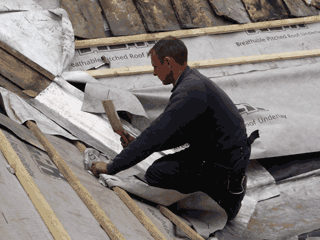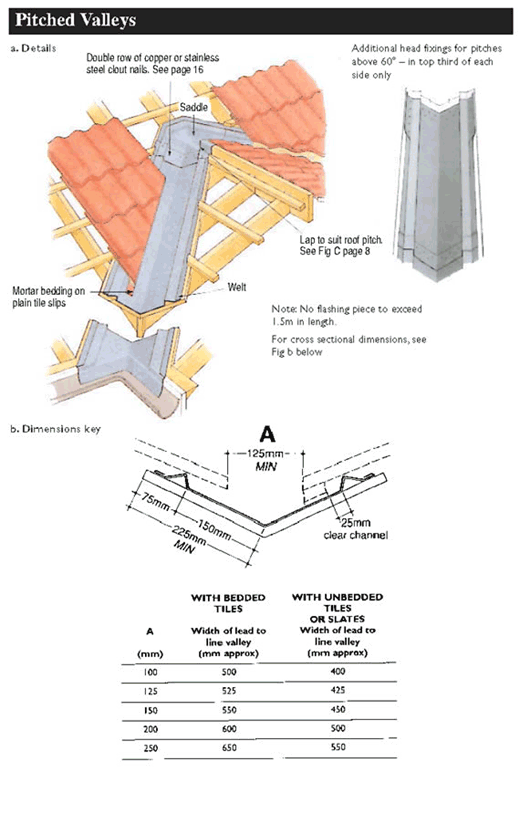Lead Valleys |
| Where valleys are required to be covered in lead using code4 or code5 gage lead over running valley boards. |
 |
LEADWORK by our own CRAFTSMEN
Most open valleys are formed using ductile metals such as lead, zinc or copper, although GRP valley troughs are also used.
Lead is the most popular metal for forming open valleys due to its long life expectancy and its ability to be bossed or cut and welded to form the flashings at the head and base of a valley.
The maximum sheet lengths should be no greater than 1.8m for lead but idealy 1.5m.
The photo shows one of our staff dressing code 5 lead to form a valley section to a pitched roof.
|
WELT
The welt is the edge of the metal liner turned back on itself, with a 4mm gap between. Lead, which is unable to support its own weight, often collapses and closes the gap, so it is better to turn the lead up to form a vertical wall level with the top of the battens/tilt fillet.
MORTAR BEDDING
The mortar bedding should form the edges of the open channel. This is essential with most interlocking tiles to locate the small cut pieces of tile, especially on the left-hand side of the valley, where without mortar they would not lie at the right angle and may not be fixed to a batten.
With double-lap slates, there may be no need to use mortar bedding. With plain tiles, the thickness of the tiles can allow insects, birds and rodents to enter the batten cavity if there is no mortar bedding.
When mortar bedding is used, it should be laid on a slip plane ? normally a piece of undercloak ? which is laid on the metal valley liner. The mortar is placed on the slip plane before the cut edges of the tiles are placed. The reason for not placing the mortar directly on the metal valley liner is to allow the liner to expand and contract freely, so that it does not fracture along the side of the open channel.
|
 |
|
|
|
|
|
| 


